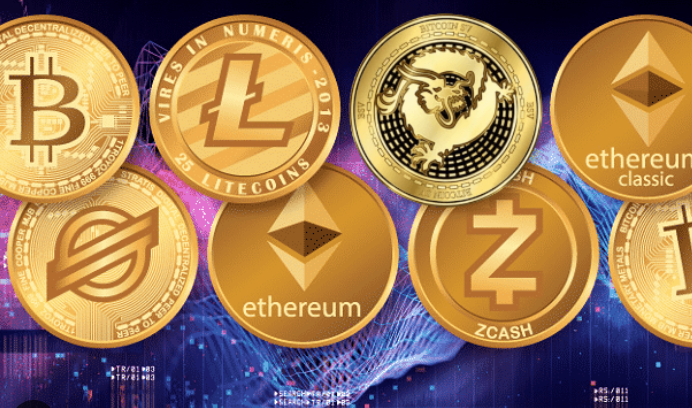Money serves as a medium of exchange for various transactions, traditionally conducted through physical currency such as notes and coins. These transactions are facilitated and carried out through a centralised system of interconnected banks. These banks act as custodian of customer’s funds, acting as intermediator between the borrower and lender. This minimizes the risk of transaction, but increases user dependence on them. These intermediaries also lack financial inclusion and accessibility for all, leaving a significant portion of the population unbanked and underbanked.

Digital currencies were introduced to address these various challenges and shortcomings associated with traditional, fiat currencies and conventional financial systems in the late 2000s.
Digital currencies, especially cryptocurrencies, operate on decentralized blockchain technology. this technology provides transparent, verifiable transactions records, which was lacking in traditional financial dealings.
The concept of digital currency:
Digital currency is a form of currency that exists only in electronic or digital form, with no physical counterpart like coins or banknotes. It relies on cryptographic techniques to secure transactions and control the creation of new units. This process is called coin minting/ coin mining. This process is fundamental to how certain digital currencies maintain their supply and secure the network.
There are different types of digital currencies, including cryptocurrencies, stablecoins, and central digital bank currencies.
Cryptocurrencies:
Cryptocurrencies use cryptographic techniques to secure transactions and control the creation of new units. They operate on decentralized networks based on blockchain technology, which is explained in detail in the later section.
Examples include: Bitcoin, Ethereum, and Litecoin.
Stablecoin:
Stablecoins are digital currencies designed to minimize price volatility by pegging their value to a stable asset. These stable assets are fiat currencies, usually US dollars.
Examples include: Dai, Tether.
Central Bank digital currency:
CBDCs are digital versions of a country's national currency issued by its central bank. CBDCs are centralized and typically operate on permissioned blockchain networks. They are controlled by central government.
Examples include: Digital Yuan, e-Euro.
Apart from this, there are other types of digital currencies such as utility coins, security tokens, or other privacy tokens.
Block chain technology:
Blockchain technology is a powerful and versatile tool with the potential to revolutionize many industries. It is a secure ledger system, which stores information (transaction records) in the form of blocks. These blocks are interconnected with each other through cryptography, which encrypts transaction data in the presence of third parties, also known as adversaries.
It is a way to ‘hide in plain sight’ by transforming information into a secret code that only authorized individuals can decipher.
The crucial aspect of block chain technology is its decentralization, which doesn’t authorise any particular individual, entity, organisation or government a complete control over the entire system.
Unlike traditional centralized databases, blockchain operates on a decentralized network of computers (nodes). Each node in the network has a copy of the entire blockchain. The ledger, or record of transactions, is also distributed across all nodes in the network. This ensures that every participant has access to the same information. This not only promotes transparency, but also minimize the risk of frauds.
Blockchain technology has also a wide range of applications beyond cryptocurrencies, including supply chain management, voting systems, identity verification, healthcare data management, and more.
Cryptocurrencies:
At its core, a cryptocurrency is a digital asset designed to work as a medium of exchange that uses cryptography for security. Unlike traditional currencies issued by governments and central banks, cryptocurrencies are decentralized and typically operate on a peer-to-peer network.
Cryptocurrencies commonly use consensus mechanisms to validate and add new transactions to the blockchain. Two primary consensus mechanisms are Proof of Work (PoW) and Proof of Stake (PoS).
Bitcoin, created in 2009, is the first and most well-known cryptocurrency, but there are thousands of other cryptocurrencies. They are referred to as altcoins.
Bitcoin mining:
Bitcoin mining is an interesting process of finding new coins. It is the process by which new coins are added to the bitcoin blockchain. Transactions made with Bitcoin are grouped into blocks. Approximately every 10 minutes, a new block is created and added to the Bitcoin blockchain.
Bitcoin relies on roof of Work (PoW). Miners compete to solve a complex mathematical puzzle associated with the current block. This puzzle is known as the "hash puzzle" or "hash function."
Solving these hash puzzles relies on the complex machines, application-Specific Integrated Circuits (ASICs) or Graphics Processing Units (GPUs) (refer image)

The miner or mining pool that successfully adds a new block to the blockchain receives the block reward, which consists of newly produced bitcoins. Using these sophisticated tools, data minors mine coins collectively- through mining pools. Mining pools enable players to search for coin together.
The total supply of bitcoins is capped at 21 million. Another crucial concept of bitcoin is its halving process. Bitcoin undergoes halving events approximately every four years to control new coin creation. The initial block reward was 50 bitcoins, halving to 25 in 2012, 12.5 in 2016, and 6.25 in 2020. The next halving will occur in 2024.
This gives, anyone with an internet connection a chance to mine for their own coin.
Conclusion:
The rise of decentralized financial systems presents profound implications for conventional financial systems. Decentralized finance operates on blockchain technology, allowing users to access a range of financial services without reliance on traditional intermediaries such as banks.
the accessibility, openness, and control provided by DeFi have the potential to lead to a transformative shift in the financial sector. By enabling users to access financial services without the need for traditional intermediaries, Decentralised finances fosters financial inclusion on a global scale. As digital currencies continue to gain traction, it prompts a re-evaluation of the traditional banking mode, and introduces us to a new era of financing.
Copyright © 2024 getessayservice.com

.png)